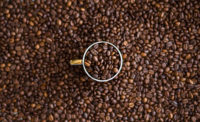Maximizing productivity and improving OEE
METTLER TOLEDO examined the OEE model to identify six key productivity challenges.

For food and beverage manufacturers, cutting costs and maximizing processes just makes sense. One popular model proven to help run production at its maximum efficiency is Overall Equipment Effectiveness (OEE).
OEE is a widely recognized model for measuring the operational efficiency of production lines across many industries. In a recent analysis, METTLER TOLEDO examined the OEE model to identify six key productivity challenges and discussed how innovations in product inspection are giving manufacturers a competitive edge.
The key challenges identified are:
1) Increasing Available Production Time: While planned downtime is not a part of OEE calculation, METTLER TOLEDO’s research reports this can have a big impact on overall productivity. Tasks such as equipment washdown, maintenance programs, line changeovers and validation checks all keep production at a standstill. The new generations of inspection technology aim to address these challenges in a variety of ways. Other contributors to downtime include equipment servicing and product changeover. “Stable and reliable inspection equipment is essential, but having built-in health-check software means that maintenance can take place at more efficient intervals,” the company says. From an inspection angle, one key issue is product recognition. METTLER TOLEDO researchers report the right product inspection equipment can increase overall production time and the cumulative impact of these incremental gains will be sizeable in production and profits.
2) Reducing Unplanned Downtime: Breakdowns can cause big problems. Reliable equipment is important, but so is having the right service and preventative maintenance plans in place to ensure equipment runs at maximum availability. Advanced warning systems allow operators to plan maintenance for when equipment will be offline. These systems also reduce downtime and waste by warning of serious faults further up the line.
3) Ensuring Production Runs at Optimized Speeds: A challenge for product inspection is inline checkweighers’ use of mechanical load cells. Product spacing becomes very important because METTLER TOLEDO’s research says the cells must be able to zero between weighings, and only one item can be weighed at a time. Often, the result is a compromise between speed and accuracy. New designs allow for accurate weighing up to 33 percent faster than previously possible.
4) Preventing Minor Stops: Product inspection equipment does far more than just tell if something is good or bad. A checkweigher with automated fill level controls can automatically examine and adjust fill levels to save time.
5) Reducing Product Waste by Detecting Problems Sooner: The placement of inspection equipment is vital for detecting problems early in the production process, before any significant value has been added to a product. By using a HACCP system and software, critical control points can be identified, and inspection equipment can be installed to eliminate the risk of contaminated product reaching customers.
“For example, broken metal sieve wires or blade fragments can be very hard to detect, particularly in challenging applications,” the company says. “By not addressing a new problem immediately, you risk much higher waste as the contaminants break up into smaller and harder-to-detect particles, at which point you might have no choice but to scrap all previous product. The unparalleled sensitivity of next-generation product inspection technology will give you the confidence to avoid such costly waste.”
6) Reducing False Rejects: More than any other part of the OEE calculation, false reject levels are affected by product inspection equipment, according to METTLER TOLEDO. New technology can address the causes of the problem.
Moisture content in foods can cause what METTLER TOLEDO’s research says is known as a “product effect,” a signal that can be interpreted as contamination by the metal detector. The typical result is poor detection sensitivity or unacceptable levels of false rejects.
Although this is a common problem for most standard metal detectors, multi-simultaneous frequency (MSF) metal detectors are more sensitive—making moisture content no longer an issue, improving OEE.
Looking for a reprint of this article?
From high-res PDFs to custom plaques, order your copy today!






